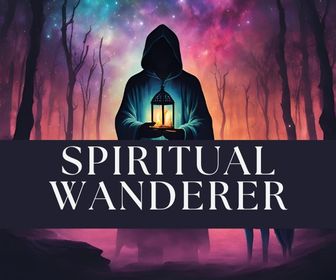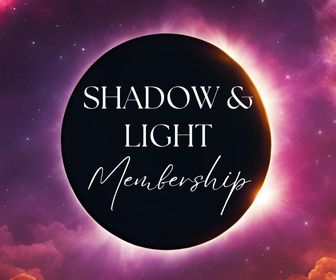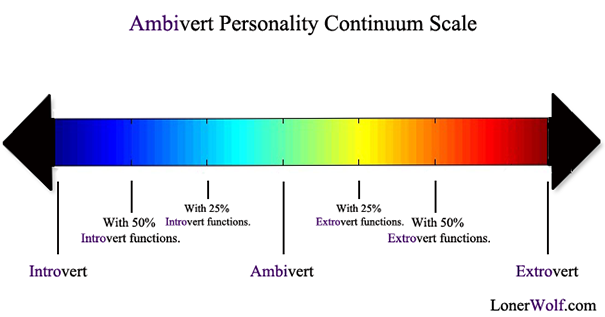There is no such thing as a pure introvert or extrovert. Such a person would be in the lunatic asylum. ~ Carl G Jung
It was when he started saying things like “you must be an INTJ” and “thinkers are more objective than feelers” that I became more interested in staring outside the window than listening to this guy – a psychology student. Personality types are fascinating to talk about, but depending on who’s doing the talking, it can get a bit too stiff for me.
Often I’ve wondered why I’m less than enthusiastic about my personality type, or types. There are as many personality tests based on Introversion and Extroversion as there are types: Jung’s Typology, Big 5, Myers Briggs, Socionics, Enneagram. Sometimes I’m an introvert, others I’m extroverted, sometimes a feeler and others a thinker. For many, personality types provide a lucid way of understanding what were felt to be the abstract traits of ones character. Finally we can share on our Facebook and twitter pages that we’re “INFJ’s!”, “ISTP’s!!”, “ISFJ’s!!!” We seem to believe that our entire emotional and mental functions as a human being perfectly correlate with this well thought out, 4 letter description of who we are. Introspection and self-analysis just became a whole lot easier – just 70 questions away to discover who you really are.
But amidst all the introvert and extrovert extremist polarity hype there exists one forgotten type. The Ambivert. I had once remotely read of the term Ambivert while perusing through Young’s “Source Book for Social Psychology“. I’ve scoured the internet extensively and found very little on the subject. It seems this ambiguous, complicated, mythical creature is nowhere to be found.

Spiritual Wanderer Course:
Being a lone wolf and a spiritual wanderer is a sacred calling in life – a unique and alchemical path of awakening. You don’t need to feel lost, alone, or stuck on your journey any more. It’s time to meet your soul’s deep needs for clarity, self-acceptance, and empowerment. Let us show you how …
Continuum Personality Scale
Introversion and extroversion are typically viewed as a single continuum. In other words: to be high in one, it is necessary to be low in the other. Jung and Briggs proposed that everyone has both an extroverted side and an introverted side, one having more predominance than the other. However, Isabel Briggs Myers only strictly allowed the classification of these two types, even though she based her work on Jung’s theory. Jung was of the idea that there was a third “middle” group. The Ambivert.
“There is, finally, a third group… the most numerous and includes the less differentiated normal man… He constitutes the extensive middle group… I call the first group extraverted and the second group introverted.” (p516, Psychological Types)
This would allow for the possibility that the majority of the population are in fact Ambiverts. Ambiverts seem like a grey area in the personality-type world. Inconveniently, paying attention to the Ambivert would present a difficult and unnecessary complication – that is, that the entire population couldn’t be squeezed into one of two boxes. Tests can never be accurate because the psyche doesn’t work in percentages. In fact, the introvert and extrovert notion was never intended to be a testable dichotomy. The concept of the Introvert and Extrovert was originally intended to determine whether a function is introverted or extroverted – not a person. However, the MBTI asserts otherwise (take our free personality test based on it here.)
Fifty Shades of Ambivert
Isn’t is more likely that our personalities are varying mixtures of introverted and extroverted functions instead of say, all functions being introverted or extroverted?
I believe that people are simply more dynamically complex than the way we polarize ourselves. The most shameless of party-goers has his insecurities, and the quietest at work can be the wildest at night. Put simply, when we’re in a comfortable environment, we’re more likely to be ourselves.
The majority of us have traits of both personalities which are contextually driven. In other words, the majority of our behavior is a result of our interactions with a situation.
If an “extrovert” has to present an assignment, he may become an introvert for the day by blocking out exterior stimulation and getting lost in a world of thought. Jung defined introversion as an “attitude-type characterised by orientation in life through subjective psychic contents” (or focus on one’s inner psychic activity). Extroversion on the other hand was defined as “an attitude type characterised by concentration of interest on the external object” (or the outside world).

Shadow & Light Membership:
⭐️⭐️⭐️⭐️⭐ "Shadow and Light’s weekly guidance always rings true to my heart. Thanks for acknowledging my shadows and inviting my inner light. I always get excited to open the Shadow and Light emails on Sunday!" – Angela M.
This means that just because you are considered an “introvert” does not mean you’re highly introspective and posses much self-knowledge. Most likely, it’s simply your “Extroverted” brain function that becomes over stimulated easily, causing you to avoid socializing. Meanwhile, you’re still getting lost in a world outside of your ‘self’, just like an extrovert does, by reading a fantasy book, or getting lost in a video game (an extrovert thought function). You may have a big imagination, but the function of your brain that finds ‘fun’ in storylines is the same as the extroverts who find ‘fun’ in experiences. Neither is left in solitude with the introverted function of self-analysis and introspection (introvert thought function). Simply put, you can have an extroverted mind while still functioning as an introvert.
However, there are those rare true unwavering personality types who possess almost all dominant extrovert functions and no introverted functions regardless of the situation. Even presenting an assignment would involve yapping away with others. Or for instance, the predominantly introverted functioners who find no sense of fun in celebrating birthdays or anything even with their closest loved ones, and would rather read a book instead.
The Freedom Of Being an Ambivert
From my understanding, Jung would say that we all have “preferences” of what we would like to do, but we also have the capacity to be able to be both introverted and extroverted. And as we get older, we slowly migrate towards the center of the continuum scale in most of our functions, as part of the self-actualization process. The majority of people, although slanted towards one side of the scale, operate using traits and preferences from both sides.
Ambiverts are people who don’t really prefer one way of functioning over another. In other words, you could say they’re the neutral, middle-ground hippies. They’re equally comfortable in situations where the introvert feels most at home and situations where the extrovert is having a good time. That being said, I would consider myself an Ambivert. I don’t feel drained from social interaction or going out shopping, and discussion energizes and invigorates me. I constantly seek daredevil risk-taking stimulation, while simultaneously relishing quiet time with my books and catching up on scientific essays. I’m both overly confident, but also reclusive and critical in thought.
The freedom with Ambiversion comes in finding both Introverted and Extroverted worlds satisfying and rewarding. Ambiversion helps you to enjoy a varied life. Ambiverts have enough introversion to slowly absorb the world around them and enough extroversion to be able to propound ideas and express themselves (through writing of verbally) without feeling depleted.
The notion of Ambiversion changed my life. Previously, when filling in a personality type questionnaire, I”d hesitate when answering questions like: “would you prefer to go to a party or read a book?” My first thought was “Depends on the party or book and also how tired I am from the previous night.” But that contextual option wasn’t available. Now I realize what a gift it is to be sensible, reasonable and well balanced enough to have the freedom of choice.
I don’t consider myself either extroverted or introverted. Even though I may be 49% extrovert and 51% introvert, I’m equally labeled an INTJ. Yet other’s with 99% introvert and 1% extrovert are still labelled INTJ’s. Superficially we have the same label, but psychologically we are entirely different. This is why I much prefer the Big 5 Personality traits, and their more balanced way of analyzing our personalities.
I’m an Ambivert with 70 shades of Introvert and 30 shades of Extrovert! What are you?
Did you know: You can take our Introvert, Ambivert or Extrovert Test?
Whenever you feel the call, there are 3 ways I can help you:
1. The Spiritual Wanderer Course: Need "big picture" direction, clarity, and focus? Our Spiritual Wanderer course is a crystallization of 10+ years of inner work, and it can help you find your deeper path and purpose in life as a spiritual wanderer. You get 3+ hours of audio-visual content, workbooks, meditations, a premium test, and more!.
2. Shadow & Light Membership: Want weekly intuitive guidance to support you on your awakening path? This affordable membership can help you to befriend your dark side, rediscover more self-love, and reclaim inner wholeness.
3. Spiritual Awakening Bundle: Looking for a collection of all our essential transformative resources? You get five enlightening ebooks, seven in-depth journals, plus two empowering bonuses to help you soul search, heal, and awaken.








Well, I’ve been searching for some information about the Ambiverts because I thought I might be one. The first suspicious thing to me was my test outcome. Yeah, I’m an INTJ, but with introversion 68% only (while my Thinking is a total 100!). I thought something’s wrong, but then I started working as an accountant. Sometimes I just have to talk to my colleagues or go outside to one of our clients’ bureaus, instead of working silently, listening to music. Now I’m motivated to move even closer to the 50% point and have a job where I will be able to listen to music when in need but also base the work on interpersonal contacts. Again, thank you and I wish you all the best!
Thank you Jayjay, I also felt the test results were my first red flag there there was something flawed with that system.
The trick is to find a job that suits your personality well, right now I’m struggling in that area as I like to have a variety of jobs but to find jobs that not only have a specific social exposure, but also that provide me enough time to meditate and enjoy my environment without consuming me into a repetitive task mindless activity .
I’m happy to see you’re so pro-active about finding ways to be well suited to your temperament :)
Well this confirms I’m an ambi …. for the time being.
Thanks for the test and articles.
Everything is temporary, it’s just a matter of finding out the length of the impermanence.
You’re very welcome!
That’s pretty cool. It’s basically like your introverted side is saying that your just as extroverted too, or vice versa. But it’s nothing like that, lol.
I turned out INTJ when I took a personality test a couple of days ago, and honestly it’s been a blast (mentally). I’m in a pretty dark place psychologically right now, and reading about my type has done nothing but shed light and sort of label and organize my “abstract” (INTJ joke) thoughts about myself. Not that I’m basing my personality or anyone’s on those classifications, but it does help a lot with self-realizations, and other thought processes that I’m sure you’d be familiar with. And the intake of information on a totally new topic for me is just addicting.
Anyway, since then I felt as if I, for once, was completely in tune with my mind and how it worked. I was aware of everything that demented bastard was taking in and working on (world domination). It has been very exciting for me, practicing my powered-up skills on everything and everyone. Being the only INTJ in a circle of friends, I’ve been taking pride in it, and have been using it to try and psychoanalyze the shit out of them (they’re getting pretty tired of it, lol). But I’ve been pretty much applying it to everything else too. That being the case, I must have “quasi-knowingly” started to become overly introverted. I suddenly became aware of the amount of time I spend in my head, and that made it seem to me like I do spend A LOT of time in there, even more. It’s basically as if when I became aware that I am an introvert, it made me more of an introvert.
But for some reason, I had this general feeling (probably the Ni talking) that I knew that I wasn’t a complete introvert. I knew I had extroverted traits too. Looking back I’m pretty sure there were times where I was harnessing Ne much more. “Ambivert.” It’s just awesome to know that there is a “name” for it too. I understand that these classifications arent supposed to be set limits or descriptions for one’s self. Personally, I think they can be used as guides at best, but still totally up to the individual as to what they’ll do with such information. I guess it’s just my love for systems and order and labels that drew me to thank you (yes, this is supposed to be an appreciative comment, haha!) for sharing this stuff, more than the realizations of not limiting one’s self to I and E, or anything else. Your article somehow dampened my aggressive approach to learning (and applying) the stuff I read/watch about personalities. It was sort of “take a chill pill” thing for me, which is totally chill.
I think I’m being too much of an INTJ now. Anyway, thank you! You’ve gained a reader! :)
Hi Ja!,
It’s easy for INTJ’s to enter dark stages through their lifetimes as we tend to put much thought and analysis into everything, we can through much through the folly of what most people do and feel that wouldn’t make us happy. It’s also dangerous to enter negative thought patterns as our minds function analytically, they enter into a cycle that is very hard to escape or un-think your way out of your thoughts (you’re trying to kill your enemy [thoughts] with your enemy [thoughts] defeating the purpose).
But how to overcome that problem is something I’ll leave for another time. I understand how personality types can work as candle in the darkness. At the beginning, when one’s mind is chaotic and going through darkness, anything that creatures structure and makes sense out of things feels awesome and great. But then as you dig deeper and deeper into your spiritual self and get to know who you are, you realize it is just a label and a dangerous one at that as it creates a mental separation between you and everyone else, just like a religion or any other belief.
The paradox here, is that it is necessary to first be fooled by this label and then to outgrow it, because initially it provides the stepping stone of stability (which fools your mind into a greater sense of peace that you belong somewhere), and that stability feeling gives you the time and inner peace to truly find who you are.
So these labels do work by making the Involutionary step of “Self Study” fun and interesting, almost like a game to be able to label everyone with a personality type. They allow you to become more mindful of things, like for example if you’re an “I” then you start focussing on that attribute and suddenly you become aware of how much introvert things you do. So then the mind tells you that you’re definitely an “I” and you believe it. This is where I tell some of my fellow seekers to be mindful of the labels, because the belief in being an “I” might make you direct your life towards reaffirming that belief (picking jobs that are Introvert friendly etc…) and if you start Involuting or growing within, you’re feelings start becoming more domiment, your desire to socialize starts feeling stronger, you might miss the subtle messages inside of you and continue with the mental belief that you are an INTJ.
I’m so happy you have the wisdom to reconsider your strong aggressive passion to trying to systematise and organize people, I had the same urge when I first encountered these personality types but I immediately realized the consequences of doing so. It’s easier to make predominant Thinkers than feelers reconsider though, as they have an easier ability to separate emotions from rationality :)
Thank you so much for a great and interesting comment, loved reading it !
REALLY ENJOYED THIS ARTICLE/POST!
favorite part was:
“The majority of us have traits of both personalities which are contextually driven. In other words, the majority of our behavior is a result of our interactions with a situation.”
Thank you Mr Charmz, I’m glad my words could resonate within you and reflect a truth we have both observed ! :)
It does make interesting points – and i agree most people are ambiverts in some way. Type descriptions are only meant to be generalizations anyway — so i think its the tendency of the human mind rather than a problem with MBTI as such. I just don’t think people should really look at the personality side all that much . I really feel with Myer Briggs looking at the functions and stack order of the types is more useful than really looking at the personality descriptions. if you are going to use it for personal development. If you are in an ambivert zone that best fit type and function development might help ( eg it is good to know what you 4th function is as often it can 1. either trip you up or 2. be a place of great insight. All the functions have introverted and extroverted aspects so either/ or preferances are always going to be tricky. Eg for years i have tested borderline ENFP/INFP but the general consensus seems to be that in cases like that a person is probably better fit with the ENFP overall. And when i look at my greatest challenge, the sensation function ..that fits. There are sites on cognitve functions that actually do this.. And also, we can have adapted preferances rather than optimal preferances..so all those basic tests , especially the free ones have to be seen as as that – basic. Also cognitive extroversion and extroversion with feeling and people are quite different styles.
Hey Ellen,
I agree wholeheartedly that looking a personality types provides a very superficial understanding of oneself. It creates the same problem that dating sites do; labelling yourself as “funny” is limited by language, funny in a sarcastic way? satirical? Trying to give ourselves an idea of what a person is like based on these labels is like trying to imagine what a pizza will taste like by reading the ingredients.
As you mention, by getting a result like INFP it immediately pretty much excludes and allows you to ignore entirely valid sides of you (your ESTJ functions) which exists, but simply in smaller scale.
I personally, recommend the Big 5 types. As not only do you measure simply a percentage of, say, how extroverted you are. But in a thorough test, they also measure the facets that exists WITHIN each function. Like within extroversion, there is: Friendliness, Gregariousness, Assertiveness, Activity Level, Excitement Seeking and Cheerfulness. Calling someone an “extrovert” is assuming that they rank on all those facets equally, which they don’t.
Thank you for a great comment, I’m glad to see there are many more people out there that are looking deeper into the popular personality types :)
I’d like to add to this statement: “Put simply, when we’re in a comfortable environment, we’re more likely to be ourselves.” by saying “with whatever aspect of our personality is warranted, neh, comfortable, in that moment.” My ha’penny.
Ahmen! :)
Being a 60/40 Ambi…..I wonder just how many there really are. Seems like the common sense of the Ambi is a fairly rare thing to find. Granted, most people will fall between the extremes…but there’s something about those who find a balance between, rather than a one way path.
Hello Bo!
I really believe a large majority of us fall in the ambivert area, those few fall around equal amounts 40/60 60/40 and everything in between. So say someone that is 70/30 will of course assume they are entirely introvert.
Another aspect is that Ambis who embrace their ambiness, arent seeking that egotistical pursuit of labeling themselves with a unique type. Sure we have the Ambi label, but that basically means that we are simply balanced in our social aspects. Many who label themselves Introverts will like to point out how Einstein and Lincoln were introverts as well. Extroverts, seeing as extroversion has always been not only acceptable but a lifestyle in American culture, dont brag about being Extroverted, they simply are.
Its okay to be predominantly introverted or extroverted, or an ambivert, none is better or worse, they all just share different aspects that make the person who they are.
Thank you for leaving a great comment :)
Sol
Hello Brothers Bo & Sol! Your 60/40 (slightly on the extraverted side, “light green” on the color spectrum if you will) Sister here! I have taken Myers-Briggs numerous times in my lifelong failed quest to figure out “what I want to be when I grow up”–51 and still undecided! I have HATED M-B from the get-go and even moreso those who insist on following it like it’s the Bible, Torah, Koran, or whatever… NONE of the 16 types sound like me! Hell, after all this I actually give more credibility to astrology than Myers-Briggs! This “ambivert” article is the first thing even remotely related to the whole subject that I felt included someone like me! Until now, I just sort of explained myself as a “hybrid species” of the DNA of my in-your-face extroverted father and lurking-behind-the-scenes but ever observant mother, with the ability to “sort of” understand both and therefore getting stuck in the role of family diplomat, which has been a crappy job but I guess somebody had to do it! So, to express my extroverted nature, it’s been great talking to you guys, but flipflopping back into introvert land, I gotta go think this over, LOL!
Hello BBDee!
Im happy to know you too have found solace in the discovery of Ambiverts. M B is quite flawed in my opinion, as I have mentioned before. People cannot under any circumstance be classified into one color or the other, we are all shades of different functions of the brain, none is all blue or all red, we are mixes of everything.
If you want a more accurate reading of your personality I would suggest Big 5 Types as its used in academic psychology and offers you a percentage, rather than a label, of each of your functions.
Astrology, read by the right person can also be surprisingly accurate in some ways, but thats left for another article and another thought.
Thank you my Ambiverted sister, for sharing your frustration and joy of the pursuit of your personality type :)
Sol
I really enjoyed this article.. and most articles here on lonerwolf actually.. I never thought I would see someone as interested in personality types as me! haha. I’ve been taking many personality tests already because I really wanted to know my true personality but it always end up telling me that I have 50% this and 50% that, or have both qualities and such. so am i really an introvert or an extrovert?
But i know for myself that I am only introverted when with intimidating people or if I just don’t know what to say or do in a particular situation but I also know that I am extroverted when I’m with my family, friends, or whenever I feel energized or excited. And most times these personalities of mine overlap one another! So I also believe that these tests are not entirely true in all aspects of me. So it really is safer to consider myself an ambivert. hehe.
The test also showed that I am an extroverted ambivert. It’s safer to label myself that I guess. haha
Thank you for this article. I really appreciate it. :)
God bless!
I too am an ambivert with extrovert tendencies; really interesting as I’ve always described myself as an enigma. I really identified with Mark’s comment about questions about preferences ie party or book. The answer for me too is always contextual and can change by the minute. Made me feel quite normal lol
Hello Mark and Jo!
You both are right in finding it hard to label yourselves, anyone in fact is hard to label because we just dont fit in as neatly as we imagine into black or white, this is a grey world of a whole universe of different traits in people.
In official academic papers, nobody uses introversion or extroversion as much as the Big 5 personality test, as it meassures levels of extroversion rather than whether you are or not an extrovert. If you want to find more accurate personality types, I encourage the Big 5 tests as they offer much more detailed scaling system of our main personality traits. :)
Thank you both for sharing your opinions, its great to see such lively commenting on this subject.
Sol
49-51
I was reading the ‘about Sol’ section and I just need to know…is it Sherlock BBC or something else?(Eg. Elementary *sickface*)
Hey Ida!
Hahah, Ive watched both and although I find Elementary slightly amusing in its americanized of the characters, I was referring to the BBC of course, its pure genius! :D